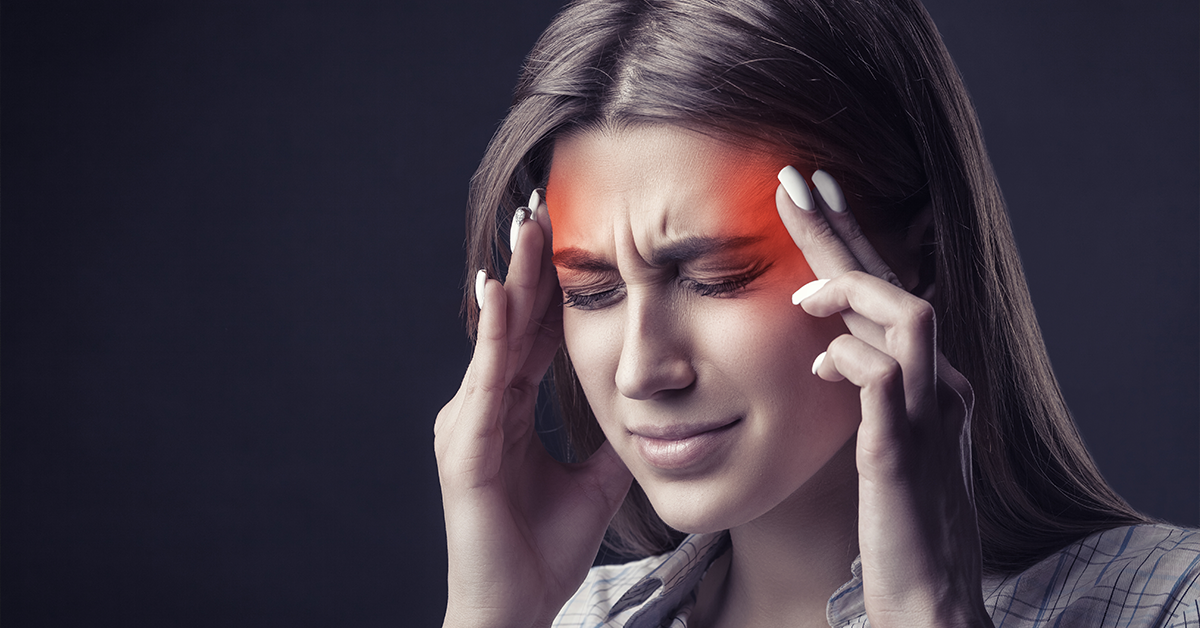This is National Migraine and Headache Awareness Month. Let’s observe it by taking a closer look at migraine, which is more than a headache. Migraine is a disabling neurological condition that has different symptoms and treatment approaches compared to other types of headaches, such as tension and cluster headaches.
Migraine causes pulsing pain that often starts on one side of your head. It typically gets worse with physical activity and makes you extremely sensitive to light, sound or smell. A migraine can last for hours or even days. Research shows it’s the sixth most disabling disorder in the world.
There are many different types of migraine. The most common are migraine with aura, or complicated migraine, and migraine without aura, or common migraine.
About 25 to 30 percent of people with migraine experience auras just before the headache pain begins. An aura is a group of sensory disturbances that may include flashes of light, zigzag lines or other vision changes. They may also include ringing in the ears, tingling on one side of the body and an inability to speak clearly. Auras serve as a warning sign that a migraine is imminent.
However, most migraine sufferers experience common migraine, without aura. Common migraines typically start slower that complicated migraines, last longer and interfere more with everyday activities. The pain is often only on one side of the head.
Migraine typically occurs in four stages: prodrome, aura, headache and postdrome. Each stage has its own symptoms.
The prodrome, or warning stage, is the calm before the storm. You may notice changes in your body and mood anywhere from a few hours to a few days before the migraine actually begins. Prodrome symptoms include difficulty concentrating, irritability and/or depression, nausea, vomiting, constipation, sensitivity to light or sound, food cravings, increased urination and muscle stiffness.
Aura symptoms were discussed above.
Symptoms of the headache stage include neck pain and stiffness; depression, giddiness and/or anxiety; sensitivity to light, sound or smell; nasal congestion; insomnia; nausea and vomiting; loss of appetite; feeling very warm or cold; diarrhea; dizziness; and blurred vision.
During this stage, you may feel a dull ache that develops into a pulsing pain that has been described as feeling like an icepick being jabbed into your head. The pain may shift from one side of your head to the other, or it can affect the front of your head, the back of your head or your entire head. The headache stage lasts anywhere from four to 72 hours.
The postdrome, also known as the migraine hangover, can last from a few hours to a day after the migraine is over. There are lingering symptoms that may include an inability to concentrate, depressed mood, fatigue, lack of comprehension and euphoric mood. About 80 percent of people with migraine experience this stage.
Researchers don’t know the cause of migraine, but they have identified certain risk factors. These include genetics. Up to 80 percent of people who have migraine have a parent, sibling or child with the disorder. Gender is another risk factor. Women are two to three times more likely to develop migraine than men. You are also at a higher risk if you live a high-stress lifestyle. Smoking also increases your risk.
Stress is a trigger for migraine. Other factors that may trigger migraine include hormonal changes; pickled, processed or canned foods; alcoholic or caffeinated beverages; certain medications; infections such as a cold or the flu; loud sounds, bright lights and strong smells such as paint fumes or heavy perfumes.
Your doctor can generally diagnose migraine based on the symptoms you report. The physician may order blood tests or an imaging exam, such as a CT or MRI, to rule out other disorders.
There is no cure for migraine. However, it can usually be managed with medication, and in some cases it can be improved. There are two main approaches that include medications: abortive and preventive.
Abortive treatment is designed to stop your migraine and ease your pain. Medications used in this approach includes over-the-counter pain relievers and prescription medications such as triptans, which reverse the changes in your brain that contribute to migraine.
Other abortive medications include ergot alkaloids, which narrow the blood vessels in the brain; and calcitonin gene-related peptide (CGRP) antagonists, which bind to CGRP and keep it from working. An influx of CGRP is believed to contribute to the development of migraine. CGRP antagonists can also be used to prevent migraine.
Preventive treatments are designed to reduce the frequency, severity and duration of migraine. They include medications such as beta blockers, calcium channel blockers, certain antidepressants and anti-seizure medications, and BOTOX injections. Wearable devices that stimulate your vagus and trigeminal nerves can also prevent migraine or give relief if the headache has started.
If you suffer from chronic migraine, don’t give up. See your doctor about abortive and preventive treatment approaches. Maybe you will find some relief from your misery.





Leave a Reply